Table of Contents
Radishes contain natural anti-inflammatory properties for your gut. They also contribute to normal blood pressure and diabetes management because they’re high in fiber. The white variety has low sugar so it won’t cause an spike after every meal like you might expect from other common vegetables – beets, parsnips or potatoes.
What exactly is white radish?
White radish, also called “Winter radish” name, by the westerners mostly, is a popular root vegetable in Asian cuisine. But did you know how exactly white radish is good for your health? Just to be clear, this article focuses on white, long type of radish (e.g. “White Icicle” radish) type as opposed to the white globe radish which is smaller, bulb shaped variety. It is also important to distinguish white radish from Daikon radish. Even though it might look like it, Daikon and White Radish are not the same.
They look very similar but they have different features. They are both long and mostly white, so in that sense White Icicle radishes are quite similar to Daikon radishes, but they often lack the greenish tint at the top, and their shape resemble carrots more closely. They are long and slim with a tapered end. Usually slimmer than Daikon. But it doesn’t only matter how they look – the white radish is called winter radish for a reason. This cool weather variety can withstand much colder weather or climate in general.
White radish vs Daikon
Here is a visual comparison between White Radish and Daikon Radish side by side.
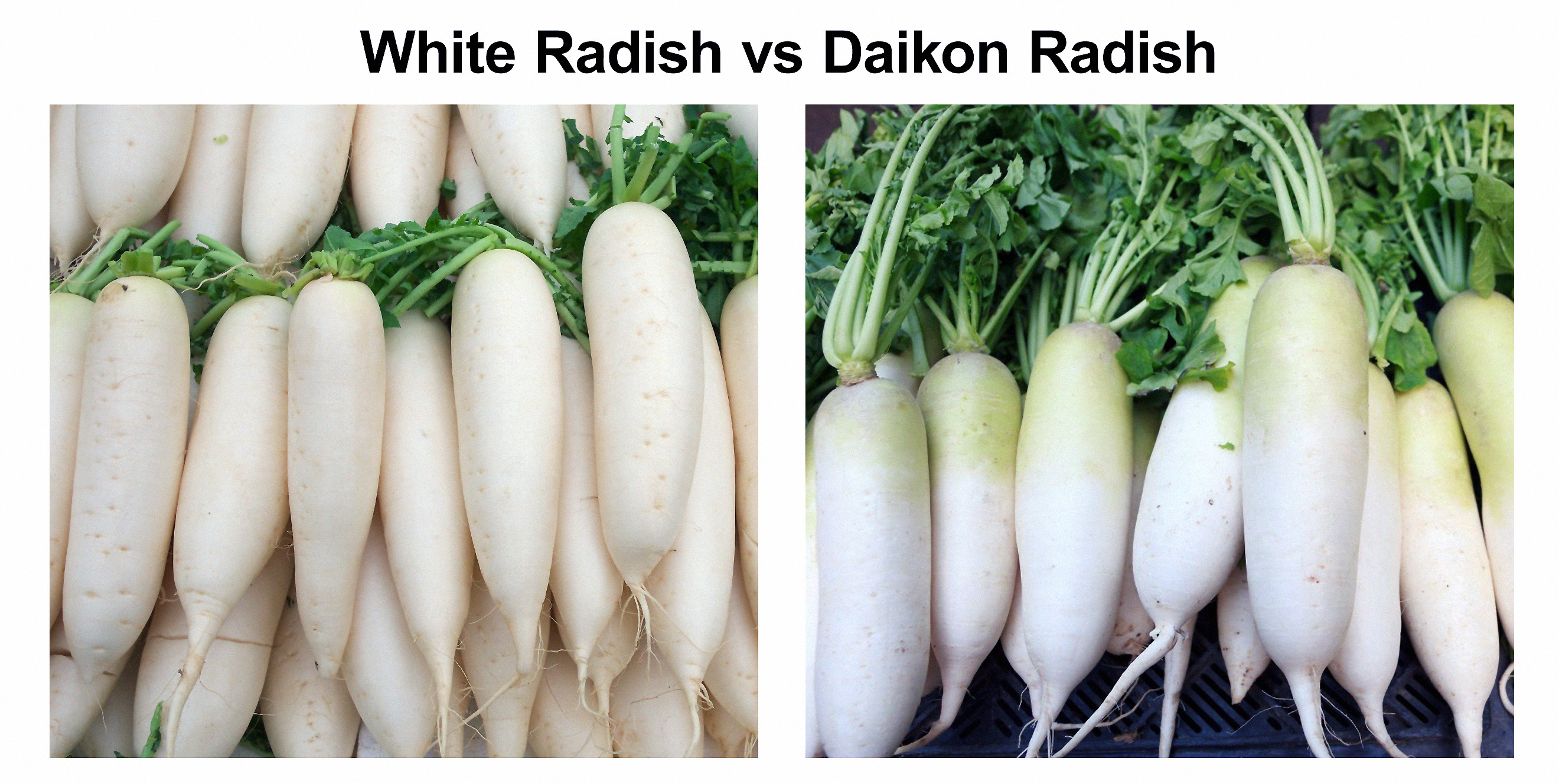
The health benefits of white radish
Radishes have a unique taste that can tingle the tongue. This is due to the presence of chemical compounds such as mercaptans and sulphur-containing compounds. These substances interact with the tastebuds on the tongue, causing them to tingle. While some people find this sensation unpleasant, others find it refreshing or even addicting! However, if you’re not a big fan of this flavor feature of red radish, white radish might be a better choice for you. The reason being, is that white radish is considered a lot milder in taste when compared to red radish and some other types of radishes. Even though it bears all the same beneficial health features, white radish taste is much milder than it’s red counterpart.
Radishes in general are classified as a “cooling” food, not only because of their unique chemical palette, but also high water content, which is marginally close to cucumber. But that is not where all health benefits come from, obviously. In fact, cucumber does not stand a chance when it comes to nutritional composition. While cucumber does have much more Vitamin K, it falls far behind when comparing other components like Fiber, Potassium or Vitamin C.
Here is what you can expect to consume per each 100g of white radish:
A total of 0.1g fat, less than 3g carbohydrates, up to 1.5g of protein and only 13 – 15 calories in total. White radish is rich in micronutrients, especially Vitamin C. Here is a rough outline of essential nutritional values:
| Nutrient Type | Milligrams |
| Vitamin C | 29 mg |
| Potassium | 280 mg |
| Vitamin B6 | 0.1 mg |
| Iron | 0.8 mg |
| Magnesium | 9 mg |
| Sodium | 16 mg |
| Cholesterol | 0 mg |
Health benefits of white radish when managing diabetes with diet
People with diabetes need to know what the glycemic index (GI) of most products are. This allows them to control blood sugar levels. The GI of white radish is 15 units, which is considered quite acceptable. Therefore, is not forbidden to eat white radish for people with diabetes. On the contrary, it helps to control sugar levels and improve metabolism. A lot of this major benefit comes from low carbohydrate content, but also from unique chemical composition which is found in this vegetable.
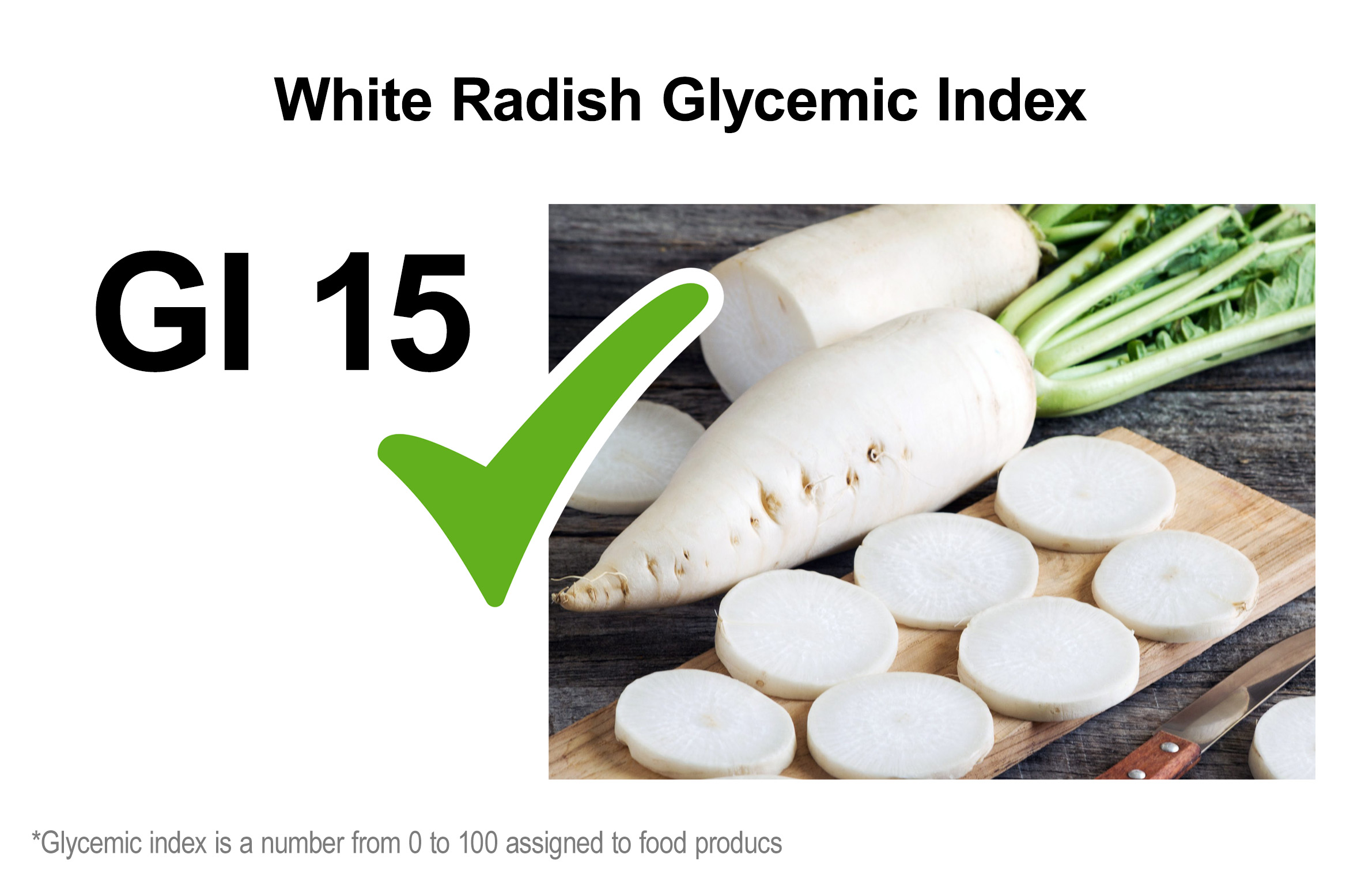 Even if you don’t have diabetes, and you’re not at risk of developing this insidious condition, consuming low GI food is still beneficial, as it takes more time in your body to be converted into energy and expended. Which means that it makes you feel fuller longer and less likely to crave for another meal again quickly. It makes your body feel more satisfied with your diet, you can even reduce calorie intake without without any dissatisfaction. Ain’t that great? Studies indicate, that increasing dietary fiber intake is tied to lower risk of weight gain and fat accumulation (based on publication on health.harvard.edu from February 17, 2015; also supported by pubmed.ncbi.nlm.nih.gov “Fiber Intake Predicts Weight Loss and Dietary Adherence in Adults Consuming Calorie-Restricted Diets: The POUNDS Lost (Preventing Overweight Using Novel Dietary Strategies) Study“).
Even if you don’t have diabetes, and you’re not at risk of developing this insidious condition, consuming low GI food is still beneficial, as it takes more time in your body to be converted into energy and expended. Which means that it makes you feel fuller longer and less likely to crave for another meal again quickly. It makes your body feel more satisfied with your diet, you can even reduce calorie intake without without any dissatisfaction. Ain’t that great? Studies indicate, that increasing dietary fiber intake is tied to lower risk of weight gain and fat accumulation (based on publication on health.harvard.edu from February 17, 2015; also supported by pubmed.ncbi.nlm.nih.gov “Fiber Intake Predicts Weight Loss and Dietary Adherence in Adults Consuming Calorie-Restricted Diets: The POUNDS Lost (Preventing Overweight Using Novel Dietary Strategies) Study“).
Eating white radish can definitely improve your fitness and health overall, but how exactly should you incorporate them into your diet, to reap all those sweet benefits? It might be easier than you think, as you can probably buy it at your local grocery store today and start eating raw, or get creative with one of the many recipes we shared here on our website.
But not only that! It’s good for your brain!
Remember to eat your greens, including radish as lettuce, beets, carrots, green beans, spinach, parsley, cabbage, radishes, celery. These are your reliable sources of micro-nutrients that helps to prevent cognitive changes linked to Multiple Sclerosis.
The amazing properties of this little gem are not only good for your health, but they can also help you stay clean! From fighting cancer to regulating the body’s water levels-radishes have it all.
How to eat white radish raw
There are many ways to eat white radish raw. Some people prefer to slice it into thin strips, while others like to grate it into a salad. You can also cut it into small cubes and add it to a dip or appetizer. No matter how you choose to eat it, white radish is a healthy and delicious snack choice!
Dipping sauce for radishes
There is no one “best” sauce for raw radish, as likes and dislikes is highly subjective feature between different people. Also, the flavor of radishes can vary sligtly depending on the variety, maturity, and growing conditions. However, some popular sauces that pair well with raw radish include vinaigrettes, herb-based pestos, and simple olive oil and lemon juice drizzles. Experiment with different flavors and combinations to find what you like best!
Dipping sauce with radishes

Don’t forget that you can even incorporate raw radish IN your sauce. It tastes great and adds this unique kick to any fresh garnishment. Just grate 1/2 cup of radish and mix it with 1/2 cup of mayonnaise and 3/4 cup of low fat sour cream. Add a pinch of salt and some leafy greens (a half of cup green, chopped onions works great) some black peeper to finish your sauce.
Add herbs, do not steer too much and consume quickly, it does not want to be thrown into the fridge. Decorate with slices of red radish and a pinch of onion greens. Yes, this one is originally made with red radish, but works with most of the radishes and it does taste great!
Grated white radish – popular Korean side dish
Simply grating and serving white radish as a side dish along with a larger meal is quite common thing to do. Korean food is often spicy and full of flavor. It’s not just about meats, but also vegetables like soybean sprouts or green onion that are used to make dishes more flavorful. In this context, raw white radish sliced in short straws adds crunchiness while retaining nutritional balance (being low in fat content) and also, serving as palate cleanser and to kill the spice.
Does white radish cause gas?
There are a few different ways that white radish can cause gas, most common symptoms are pain or discomfort (usually at lower abdomen). First, it is a cruciferous vegetable (Cruciferous vegetables are vegetables of the family Brassicaceae), and these types of vegetables are known to cause gas. This is because they contain some levels of sulfur, which can be difficult for the body to digest. Additionally, white radish is a very fibrous vegetable, and this can also lead to gas formation. When you eat foods that are high in fiber, your digestive system has to work harder to break them down, and this can sometimes lead to trapped air and gas pockets.
The soluble fiber within vegetables like white radish does not start to break down until it has reached the small intestine. But most of these problems could be easily managed or avoided by adjusting the portion size and other eating habits. We already covered this issue to larger extent when discussed the portion size and acceptable daily intake for radishes in general, you can read all about it right here. Though your experience may vary due to many reasons, we’re here with the good news that it doesn’t have be a bad one.
Here are some essential tips on eating white radish correctly to reduce gas and discomfort:
• If you feel that you have so much gas all of a sudden, it might be linked to radish consumption. Limit the intake to not more than 50 grams or exclude them from your diet temporary to see if that helps.
• Drink plenty of water. Water is essential for our body to function properly. Even if we’re not thirsty, it’s important to drink water throughout the day. Our bodies are made up of 60% water, and every system in our body needs water to work effectively. Water helps flush toxins out of our system, carries nutrients to our cells. Dehydration can cause a number of problems, for example moving food through the digestive system takes longer when you don’t drink enough water. That it because your body absorbs more water from digestive tract through osmosis. Hard, dry stools are the result of the colon absorbing too much water. That is a recipe for constipation. So even if you’re not feeling thirsty, it’s important to drink plenty of water every day. Remember – when you’re feeling thirsty, your body is already dehydrated. By the time you feel thirsty, you’ve already lost 1-2% of your body’s total water content. And even mild dehydration can negatively impact your health and well-being.
• If you love white radish but can’t stand getting the gas every time – try kimchi, pickles or simmered radish dressed with sweet miso as alternative to white raw radish garnishment.
• Make sure to eat radishes in the first half of the day, or anywhere before 5:00 pm as it will be processed before you go to bed and will in turn help you to have better, undisturbed night sleep.
• Don’t forget to add up other cruciferous vegetables to the total fiber mass that you consume daily. For example kale, bok choy, arugula, broccoli, cauliflower, Brussels sprouts, cabbage, collards will contribute to the gas buildup as well as white radish.
• Make sure to move more and let your body metabolize food efficiently. Avoid eating large portions and staying stationary for the rest of the day. Take a walk, have a run or have a stroll with your dog. Moving and having exercise is one of the best ways to help your body digest food. When you work out, your body burns calories, and this increased metabolic rate helps to stimulate digestion and elimination. In addition, exercise helps to increase blood flow and stimulate the contractions of the digestive muscles. All of this combined helps to move food through your system more quickly and efficiently.
• Make sure to eat other vegetables and salads whenever preparing meals that include white radish.
• Use less dairy products like yogurt and sour cream when preparing white radish salads. You can easily replace them with olive oil, soy sauce or apple cider vinegar based liquids. In fact, apple cider vinegar is specifically good at mitigating the bloating effect of white radish (when eaten raw).
• There’s some evidence to suggest that ginger, peppermint, and fennel seeds may help to soothe an upset stomach. Peppermint oil is also thought to be helpful in treating indigestion and other digestive issues like irritable bowel syndrome (IBS). A clinical trial showed that enteric-coated peppermint oil capsules were able to significantly reduce IBS symptoms like abdominal pain and bloating. Fennel seeds are often used as a traditional remedy for various digestive issues like gas and indigestion.
Get daily tips to eat well! Read all about radishes on the diet section of our site.

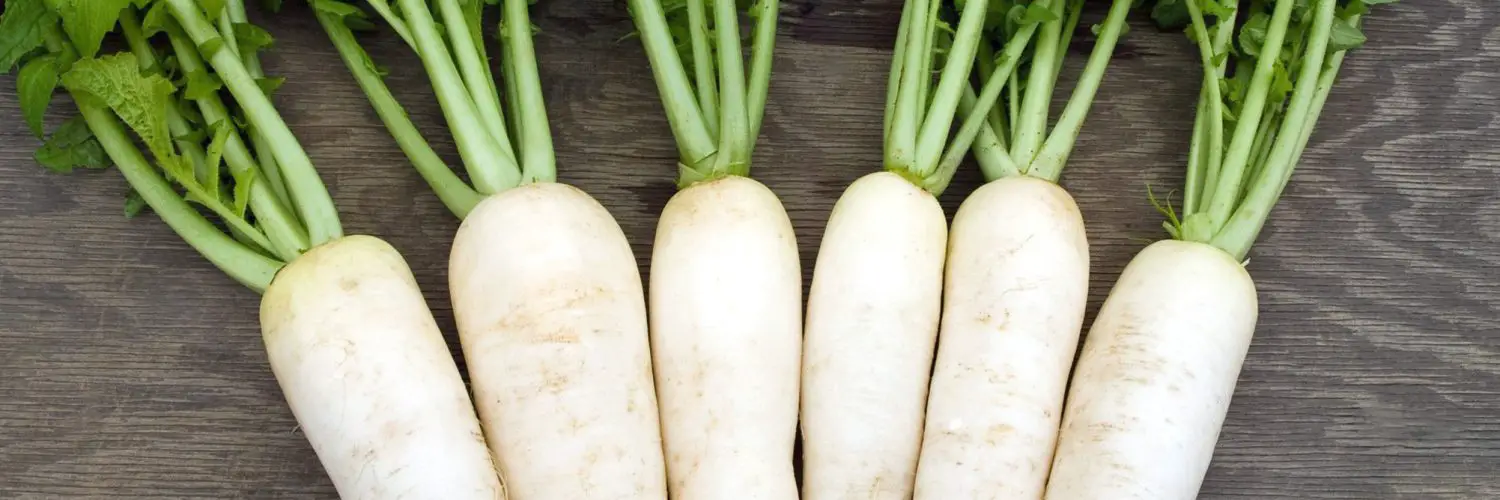
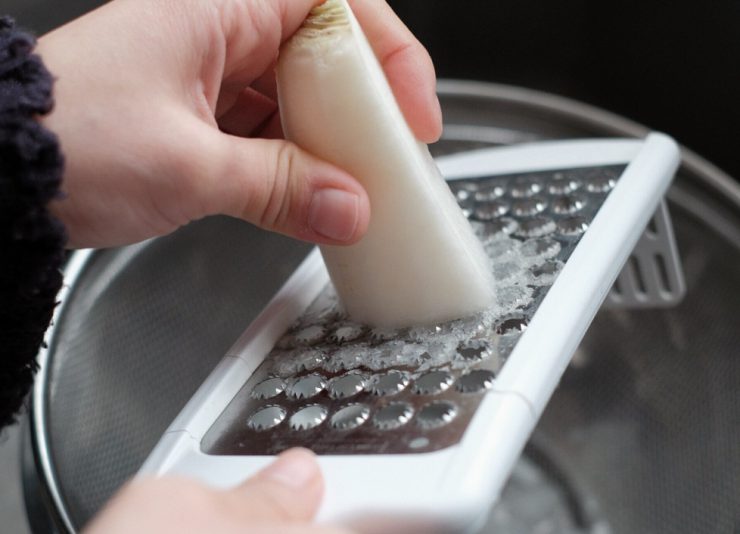
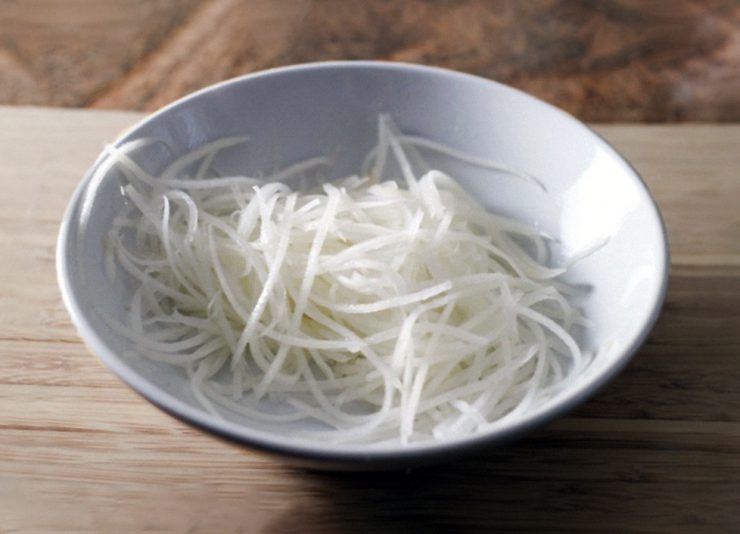
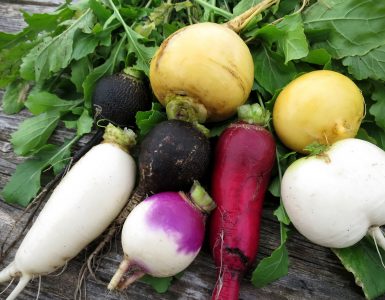
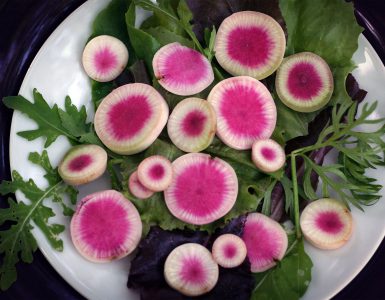
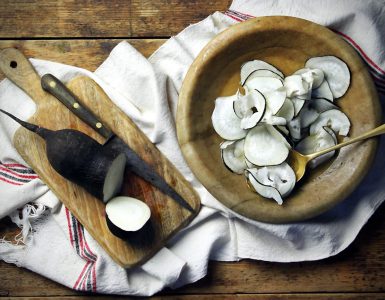









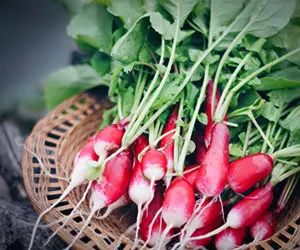

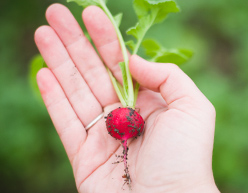







Add comment